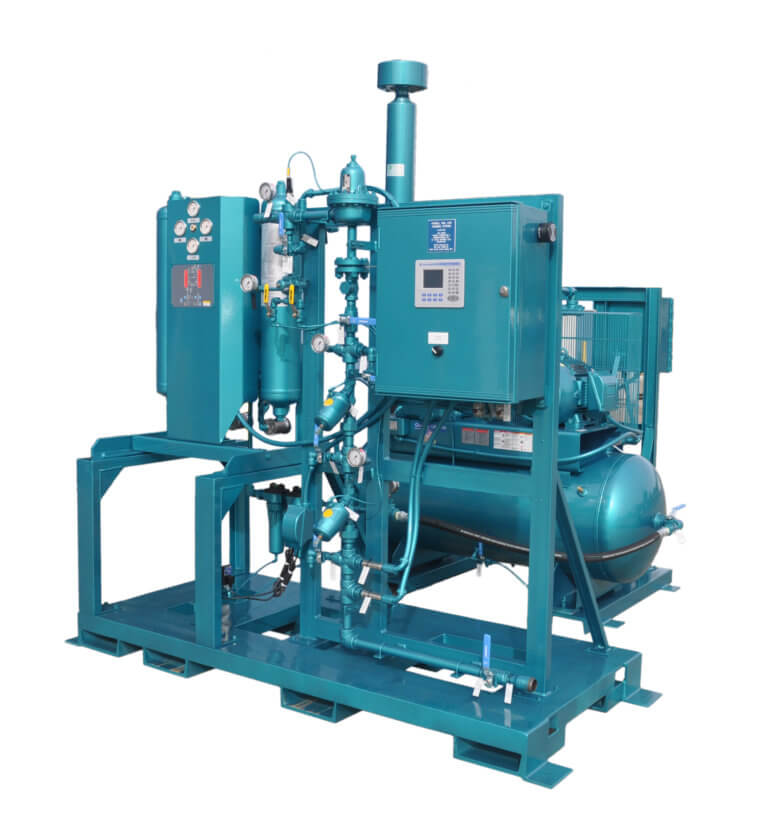USA
USA
Latin America
Brazil & Portugal
888-800-2310 (Toll Free) 989-681-2158 (Local/International) 740 E Monroe Road, St. Louis, MI 48880
517-579-3061 Teléfono en México: 55-5351-3093 info@brinechlor.com
55-13-997855697

The Air Treatment System provides an independent source of clean, oil-free, dry air following The Chlorine Institute, Pamphlet 66 guidelines for chlorine tank car pressure padding. It is completely isolated from other air supplies to prevent vapors from accidentally mixing into the instruments and equipment. Built-in redundant features protect equipment in the event of power loss, compressor failure, or failure of individual components.
Pressurized bulk containers, such as railcars, ISO containers, or ton containers of chlorine and sulfur dioxide, frequently require additional pressure to facilitate the unloading operation at the user facilities. This practice – often called pressure padding – introduces air or nitrogen into the vapor space above the liquid in the container to force the liquid up the internal dip tube and out of the liquid valve. Typically, the pad gas is filtered, dry air (as opposed to nitrogen).
The air used in any pad gas operation must be of high quality to protect the integrity of the system and meet the following criteria:
The system incorporates an air compressor with an aftercooler, four-stage air filtration, air dryer, and backflow prevention sub-assembly mounted on a skid along with a control system housed in a NEMA 4X box with an easy to operate HMI operator screen.
The unit provides clean, oil-free, dry air with a dew point of -40°F or below line pressure. Typical system flow rates are 40 SCFM or 60 SCFM. Other sizes can be provided if necessary.
The typical maximum outlet pressure is 12.4 bar (180 PSIG). The unit will automatically fill bulk containers in an on/off mode with a minimum of 0.35 bar (5 PSIG) differential.
An oil and water separator is standard on the Air Treatment System. After separation, water drains to a waste treatment system and it reclaims the waste oil for recycling.
The unit is completely assembled and tested at our factory and is shipped completely assembled, requiring only on-site connection to power and external air-line piping.
The control system includes an HMI display screen to indicate line pressures, bulk container pressure, moisture content, differential pressure, and compressor oil pressure. The display also indicates power on for automatic valves. An alarm horn is included, and a common alarm contact is provided. System alarms, such as high moisture, low differential pressure, or low compressor oil pressure will show up on the HMI with a time and date stamp, and the audible horn will sound.
The backflow prevention component of the Air Treatment System is available as a skid-mounted, standalone component. The unit is designed to prevent the back flow of chlorine from the bulk container to the air compressor and drying system. It is also designed to automatically fill the bulk container. Built in redundant features protect the equipment in the event of power loss, compressor failure, or failure of individual components.
The Backflow Prevention Unit includes all appropriate instrumentation as well as a control system mounted on the skid.